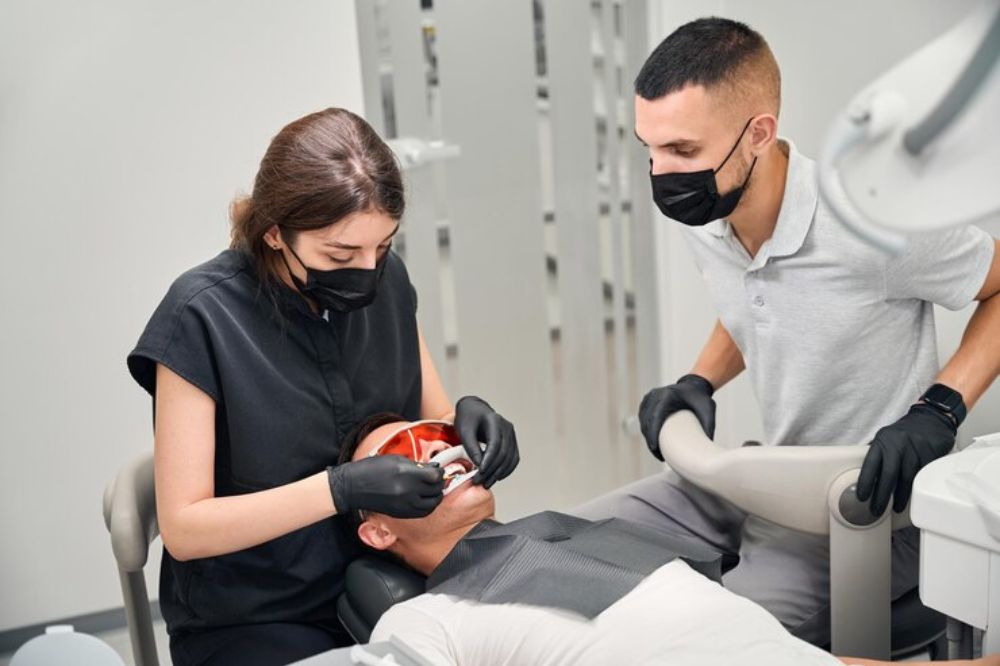Hearing the words “root canal” might make some people nervous, but thanks to modern dentistry, root canal treatment is now a simple and often painless procedure. If you’re dealing with a painful tooth or an infection deep inside the tooth, root canal therapy in Saskatoon can help save the tooth and relieve your discomfort.
This blog will walk you through all there is to learn about root canal therapy — from what it is and why you need it to what you can anticipate during and after treatment.
What Is Root Canal Therapy?
Root canal therapy is a dental treatment of an infected or badly decayed tooth. There is a soft tissue within each tooth called pulp. If this pulp gets infected because of deep cavities, cracks, or injury, it leads to pain and swelling. If not treated, the infection becomes larger and causes more complicated health issues.
Root canal therapy is the extraction of the infected pulp, cleaning out the inside of the tooth, and filling in the tooth so that you will not have issues in the future. This will save your natural tooth and will prevent you from needing an extraction.
Symptoms That You Need a Root Canal
Some of the common symptoms that you might need root canal therapy are
- Persistent or bad pain in a tooth
- Sensitivity to heat or cold
- Swollen gums on one tooth
- Darkened or discoloured tooth
- A gum pimple (a sign of infection)
This has to be evaluated by only a dentist in Saskatoon, and it has to be established whether a root canal is appropriate or not.
The Root Canal Process: Step by Step
Many patients are surprised to learn that root canal therapy feels no more painful than getting a filling. Thanks to local anesthesia and gentle techniques, the procedure is often smooth and comfortable. Here’s how it typically goes:
- X-Ray and Exam: The dentist takes an X-ray to see how far the infection has spread.
- Numbing the Area: Local anesthesia is used so you won’t feel pain during the treatment.
- Removing the Pulp: The dentist makes a small hole in the tooth to remove the infected or damaged pulp.
- Cleaning and Shaping: The inside of the tooth is cleaned and shaped carefully.
- Sealing the Tooth: Once cleaned, the space is filled and sealed to prevent bacteria from coming back.
- Restoration: In most cases, a crown is placed on top of the tooth to protect it and restore its shape and function.
Book your appointment today for effective dental care in Saskatoon, SK!
Is Root Canal Therapy Painful?
A common question from patients is, “Will it hurt?” Thanks to advancements in dental care, many clinics now offer painless root canal treatment. With modern tools and anesthesia, you’ll feel little to no pain during the procedure, and any soreness after the treatment can usually be managed with over-the-counter medication.
Most people feel relief after a root canal, especially if they were in pain before.
When Is Emergency Root Canal Treatment Needed?
Sometimes, a dental infection can come on quickly and get worse in a short time. If you’re experiencing extreme pain or swelling in your face or gums or can’t eat or sleep because of the discomfort, you may need emergency root canal treatment for infected tooth.
In these cases, getting care as soon as possible is important to avoid the spread of infection and protect your health.
Root Canal vs. Tooth Extraction
Some patients wonder if it’s better to just remove the tooth. While tooth extraction may seem like a quicker fix, it can lead to more problems in the long run, like shifting teeth, bite issues, and needing a replacement like a bridge or implant.
Root canal therapy lets you keep your natural tooth, which is always the best option when possible. It helps maintain your natural bite and supports the health of nearby teeth.
Where to Find Root Canal Help Near You
If you’re looking for treatment in your area, many people search for root canal therapy near Rosewood to find a dental clinic close to home. Local dentists can provide quick evaluations and start treatment fast, especially in emergency cases. Choosing a trusted and experienced dental team ensures you get the care you need with minimal stress.
Additional Care After a Root Canal
After the procedure, it’s important to follow the instructions of your dentist near Rosewood for a smooth recovery. You may feel slight discomfort for a few days, but this is normal and should improve with time. Make sure to:
- Take any prescribed medications as directed
- Avoid chewing on the treated tooth until it’s fully restored with a crown.
- Brush and floss daily to keep your mouth healthy
- Schedule regular checkups.
With good care, a root canal-treated tooth can last a lifetime.
Protect Your Smile — Get the Care You Deserve
Root canal therapy is a safe, effective, and often necessary treatment to save a tooth and stop infection. If you’re experiencing tooth pain or signs of infection, don’t wait to get help.
Schedule your visit today with Meadows Dental —we’re here to provide gentle, expert care and help you feel comfortable every step of the way!

